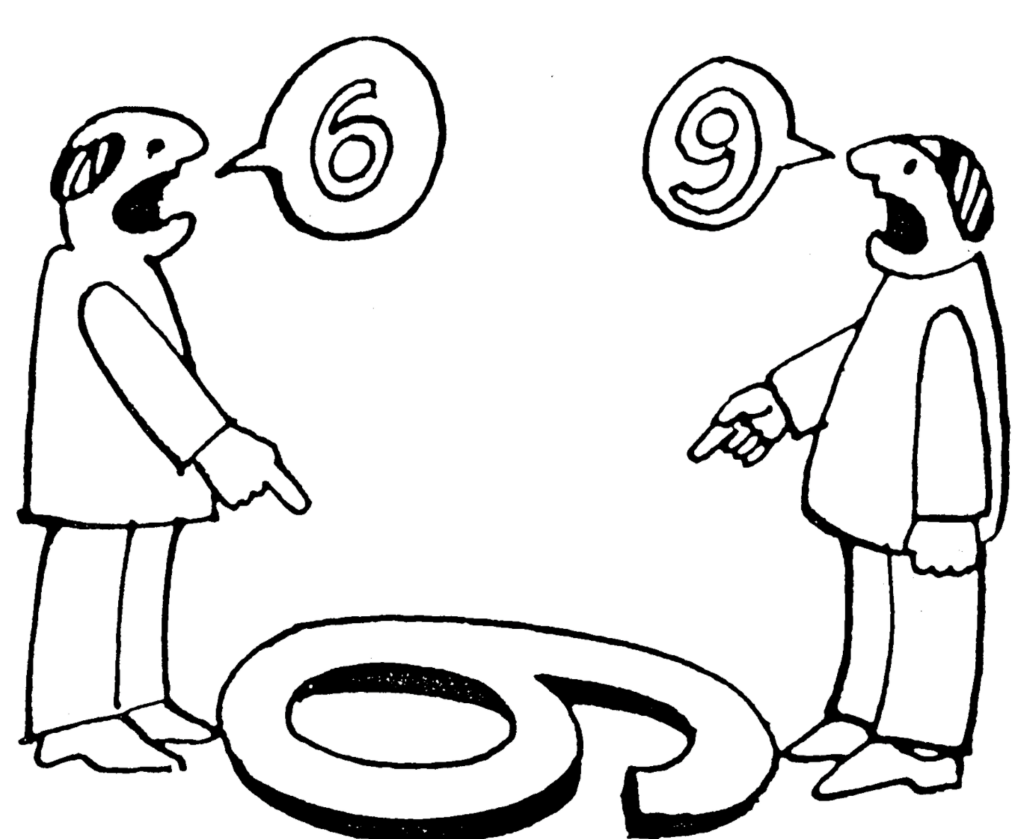We live in Volatile, Uncertain, Complex and Ambiguous (VUCA) world. But what does that mean for you as a leader? Let’s explore how traditional horizontal approaches to leadership fall short and double down on the Vertical skills that leaders need to develop in order to make sense of and thrive in a VUCA world.
The book Upgrade: Building your capacity for complexity links VUCA with four capacities that underpin Vertical leadership skills:
- Sensemaking – Observing, understanding and processing the complexity of a situation e.g. getting your head around all the different interconnected topics, data, issues or causal relationships.
- Perspective-shifting – ‘Zooming out’ to benefit from a more realistic and multifaceted understanding of a situation or relationship e.g. understanding the perspectives and agendas of the various stakeholders.
- Self-relating – Observing, understanding, regulating and transforming yourself e.g. making sense of your own reactions, thoughts and feelings.
- Opposable Thinking – Responding to the dilemmas and conflicting ideas that can create tensions within us and / or between us and other people e.g. working with opposing views.
For a deeper dive into the academic underpinnings of Vertical Development, read my earlier article What is Vertical Development & how can it help leaders transform? To go even deeper, read my Accelerating Executive Mastery >> series.

Follow the links below to jump to sections:
Expanding your capacity to lead in a VUCA world
Leadership is traditionally framed in terms of understanding the job to be done and building the capabilities required to do it.
Capability is the ability to execute on a specified set of tasks and course of action in order to achieve a certain outcome or set of outcomes. Capable people have the potential to acquire more specific skills and abilities in order to help them do this. In doing so, their knowledge and skill set increases and they become more capable at achieving required outcomes.
Developing technical skills, behaviours, adding information and knowledge; these are the more day-to-day, practical aspects of managing and leading people. They include things like running effective meetings, delivering training, conducting one-on-ones, giving effective feedback, coaching your team, conducting interviews, investor and Board updates, designing and implementing new organisational design structures, meeting cadences etc.
This is the type of explicit learning and skill development that we are used to receiving through school and college, and most traditional talent and leadership development initiatives. These capabilities are largely task focused, bounded and learnable. But this expression of what leadership is is incomplete for a VUCA world. That’s because all these interventions help people become more proficient at their job but they expand and enrich leaders only within the context of their current way of making sense of their world and constructing meaning within it.
Traditional horizontal development, focuses on the acquisition of further knowledge, skills and development of specific personal qualities to become more proficient and experienced in a given aspect of leadership. By contrast, Vertical Development transforms the underlying capacity of the leader to make sense of and respond to situations, working directly on their internal ‘meaning making’, rather than just behaviours or actions. Vertical Development complements horizontal development rather than replacing it – leaders still require the knowledge, skills, competencies and personal qualities to be able to perform effectively at whatever development stage they may be operating. Think of the difference between adding more apps to a leader’s repertoire, and helping them to change their underlying operating system.
Vertical Development: building leadership capabilities for the future
Nick Petrie imagines the mind as a cup. Existing leadership advice and development is horizontally focused – pouring new content into the leader, focused on the jobs and capabilities already discussed. For new leaders this is helpful and necessary, but the CEOs and leaders of the future will be the ones who don’t just fill up their cup, but make it bigger, allowing them to think and act in more complex, systemic, and interdependent ways. This is Vertical Development, and it’s what’s needed to really help leaders lead people and build businesses in a VUCA world.
Vertical leadership in a VUCA world
Equipping leaders with foundational horizontal leadership is an essential part of their early development. But to navigate a VUCA world leaders need to be able to ‘see’ and ‘hold’ the emerging complexity in front of them. In Upgrade: Building your capacity for complexity, the authors link VUCA with four leadership capacities that underpin vertical skills.
1. Sensemaking
Sensemaking is the process by which people give meaning to their collective experiences. It is the process of “structuring the unknown” by “placing stimuli into some kind of framework” that enables us “to comprehend, understand, explain, attribute, extrapolate, and predict”.
The capacity for increased sensemaking is one of the biggest shifts that I see in my work with leaders as they grow. Early on in their journey, I can feel clients viscerally grappling with existing processes, frameworks, blueprints, playbooks and mental models. They’re trying to squeeze their reality through them, until The Correct Answer appears. When their reality inevitably doesn’t quite fit, it leads to confusion and despondence.
As their mental complexity increases they come to realise that building a business is not like building a bridge. Processes, frameworks, blueprints, playbooks, existing mental models and suchlike are helpful but they’re just tools in a collective toolbox.
“I used to think building a company is like building a bridge. You spend a lot of time designing, it’s very prescriptive… What I’ve come to the realization recently is it’s actually more like tending a garden… much more organic. Though you plant certain seeds in the garden, and you fertilize and water them, you don’t actually know what’s going to grow. Tending a garden is encouraging things to grow, giving the right conditions… My job as a leader is to build a bigger garden every year and make sure we have all the right conditions, the right values, the culture, and plant the right seeds of hiring the right employees and giving them the right opportunities. Trying to control things and have a predictable outcome, I’ve given up on that long ago and it’s all about making sure we have the right conditions to grow.”
Scott Farquhar, CEO of Atlassian
Reframing the way they we make sense of our reality allows us to create a new relationship with it, that recognises the inherent uncertain and complexity in front of us. Instead of being confused, despondent and fearful, we can embrace our unknowable future, with the knowledge that we’ve enhanced our capacity to deal with it (whilst at the same time adding a few more tools to our complexity toolbox).
Initially… we borrow tools and processes for identifying, analysing and solving problems from the people around us – experts, teachers, parents, siblings, colleagues, mentors and so on. We think in a step-by-step way, one task or sub-goal at a time.
As we progress… we begin to create tools and processes of our own, especially in relation to the things that most interest us – whether that’s innovation, sales or accounting processes, manufacturing improvements, capability frameworks, marketing models or something else. We’re also thinking in a way that is more end-goal directed. We’ll take our objectives and map out a whole trajectory for reaching them. However, once we’re underway we can get blindsided when our carefully designed processes and programmes hit an unexpected snag. So we often resort to simply pushing harder, rather than stepping back and seeking an alternative path or altering the destination to better suit evolving conditions.
We start to notice that there are many acceptable (or good enough) ways of reaching a given objective. As a result, we become less attached to the tools and ideas we lovingly crafted. We’re more willing to improve them, discard them or use them interchangeably with other tools to suit the situation in which we find ourselves. We’re not just able to identify different paths to a given objective, we’re also starting to question the objectives themselves… We’re creating alternative ways of reasoning about a situation or issue – rather than just different arguments within the same way of thinking. We also start to compare the usefulness of those different ways of reasoning, and each approach’s fit with our values.
[The next level] is a watershed in our ability to handle complexity. We suddenly develop new ways of thinking about the multiplicity of possible pathways and desired outcomes. We start to develop our own overall models and frameworks for thinking about the situations or professional domains we’ve been mastering. Were able to gather up hugely diverse sets of ideas and influences into a single map of ‘what’s going on around here’, then use that map to choose strategies, drive decisions and establish what is negotiable and what isn’t.
Upgrade: Building your capacity for complexity
2. Perspective Shifting
The ‘same thing’ can look very different to different people, depending on how they are looking at it. That’s because we all see the world through our own lens, hence we make sense of it in different ways. It’s not that one way of seeing world is right and another wrong, it’s just different. Individually, it can be easy to get stuck in a singular, sometimes myopic, way of viewing things. So on a regular basis, we need able to put on a different pair of glasses in order to shift what we are seeing and the way we are seeing it.
Taking multiple perspectives enables people to see a wider range of possibilities, be able to empathize, make deeper connections, and understand the views of others. Even with these benefits, taking multiple perspectives isn’t natural for most people. The brain acts as a filter, keeping from view any ideas or perspectives that might be disconcerting – or that might actually teach us a thing or two. Intentionally taking other people’s perspective stretches the mind and makes it possible to see new options. When someone has the habit of taking multiple perspectives for herself, others begin to sense the openness and begin to offer information that a person with a more closed perspective and affect might never hear. This means that the multiple perspectives begin to be fed from within and from without, and people have greater access to the broader views they need in order to address complex issues.
Changing on the Job: Developing Leaders for a Complex World
How can we shift our perspectives?
Listen to learn, rather than to convince
Listening is a key leadership skill no matter how complex the situation is. Listening well gives leaders new information, helps them make better decisions, and builds relationships. Listening is not just an additive skill; It is perhaps the most central of all leadership skills
Coaching for an Increasingly Complex World (also watch this video)
Engage differently, and ask different questions
- Do you have the right people in the room to get a wide variety of opinions and perspectives? Or are you cosying up to your closer inner circle?
- Are you talking to the same people? Who have you not spoken to in your business, our outside of it, who you know you should do? From whom could you learn something new?
- Who have you written off as uninteresting or unmovable? What could you learn by listening to that person rather than trying to tell him something?
- Which people or parts of your business do you know little about and how could you find out more?
- Whose perspectives are you most certain about and how could you be wrong?
Taking existing perspectives, seek new ones, and integrate them
There’s a complexity gap between the task demands of most leadership roles and the capacities of the leaders… We found a lot of differential between people’s ability to handle the kind of, let’s say, engineering problem solving side of their jobs, and that the struggles emerged in the domains of perspective taking, perspective seeking, and perspective integration.
Zak Stein on Hierarchical Complexity
Don’t surround yourself with people just like you
It’s easier to take the perspective of someone who agrees with you than someone who disagrees with you. Our hardwired, homophilic tendencies narrow our own perspectives, distorting our view of the world and limiting our capacity to make better sense of it. That’s just another reason why building diverse, equal and inclusive teams are so important.
Empathy is not the same thing as perspective taking
Perspective-taking is an important skill, but it’s not to be confused with empathy, its emotional cousin. “Empathy is about feeling the other person’s feelings. Perspective-taking is a cognitive phenomenon, a thought process” says Dr. Gillian Ku, Professor of Organisational Behaviour at London Business School. It’s is a process that begins in childhood: we start out with a more egocentric worldview then learn to adjust how we see things to accommodate others’ viewpoints.
3. Self-relating
There are these two young fish swimming along and they happen to meet an older fish swimming the other way, who nods at them and says “Morning, boys. How’s the water?” And the two young fish swim on for a bit, and then eventually one of them looks over at the other and goes “What the hell is water?”
This is Water, by David Foster Wallace
[Self-relating] summarises our ability to relate directly to aspects of our inner experience – our thoughts, emotional responses, beliefs, gut-feels, historical patterns and habits of mind. These things play out continuously in the internal theatre of our brains and bodies, influencing our actions and decisions whether we are aware of them or not . Capacity for self relating plays a pivotal role when it comes to interpreting and operating in this world. The more we understand the source of our habits, decisions and choices, the less we are at the mercy of unconscious forces and rules of thumb that biases our thinking and can keep us stuck in unhelpful patterns of behaviour, thought and emotional response.
Upgrade: Building your capacity for complexity
Robert Kegan talks about us moving from being Subject to our thoughts (those elements of our knowing or organising that we are identified with, tied to, fused with, or are embedded in), to holding them in a more Object way (having the capacity to reflect, handle, look at, be responsible for, relate, take control of, internalise and assimilate them). Like the two fishes, we are ‘had by’ our beliefs when it is like the water that we swim in.
For example, if I am had by my belief that my venture capital investors know much more about my industry than I do, then I might feel torn when I disagree with a course of action they propose because, deep down, I think they’re making a bad call. Afterall, they’ve been doing this for years, right? However, if I’m able to step back, reflect and notice that I have this belief then I can metaphorically hold it up in front of me and explore it from other angles. I might ask if my investors’ expertise is applicable in this complex situation? Are their own biases, and the things they are Subject to, leading them to be over-confident? What other nuanced criteria might I consider?
4. Opposable Thinking
From an evolutionary perspective, the brain is masterful at either/or thinking, and it doesn’t like the nebulousness off both/and. From the earliest times, the brain has had to quickly determine if something was safe or dangerous. Seeing things in opposition is hard wired into our brains, which makes it completely logical and understandable that we would have to work harder to hold a both/and mentality.
Navigating Polarities: Using Both/And Thinking to Lead Transformation
Yet in business and leadership we are often faced with both/and situations, otherwise known as paradoxes, polarities, dualities, or wicked problems. That’s because in a VUCA world, two seemingly alternative things can be true at the same time. Developing the capacity to think in a more integrative way is a core vertical leadership skill. Says management theorist and Professor Roger Martin:
The leaders I have studied share at least one trait, aside from their talent for innovation and long term business success. They have the predisposition and the capacity to hold two diametrically opposing ideas in their heads. And then, without panicking or simply settling for one alternative or the other, they’re able to produce a synthesis that is superior to either opposing idea.
The Opposable Mind: How Successful Leaders Win Through Integrative Thinking
He identifies four differences between what he calls conventional thinkers and the types of integrative thinkers needed to navigate VUCA environments:
- More salient features make for a messier problem. But integrative thinkers don’t mind the mess. In fact, they welcome it because the mess assures them that they haven’t edited out features necessary to the contemplation of the problem as a whole. They welcome complexity because they know the best answers arise from complexity.
- They don’t flinch from considering multi directional and non-causal linear relationships simple uni-directional relationships are easier to hold in mind, but they don’t generate more satisfactory resolutions.
- They allow complexity to compound as they design their decision’s. The complexity presents a cognitive challenge that integrative thinkers welcome, because they know that complexity brings along in its train an opportunity for a breakthrough resolution.
- They always search for creative resolution of tensions, rather than accept unpleasant tradeoffs.
Navigating Polarities
Here are some common polarities you might have experienced, or are currently grappling with:
| Leadership | Organisational |
|---|---|
| Servant Leadership :: Heroic Leadership Grounded :: Visionary Leader as Coach :: Command & Control Empower :: Direct Support :: Challenge Reflection :: Action Diplomacy :: Candor Realistic :: Optimistic Lead by Example :: Delegate Effectively Manager :: Leader Ask the Right Questions :: Have the Answers Listen Intently :: Communicate Confidently Support Team :: Provide Freedom Be Inclusive :: Be Decisive Embrace Complexity :: Keep it Simple (KISS) Open-minded :: Paranoia Risk :: Results | Holocracy :: Hierarchy Centralization :: Decenralization Structure :: Flexibility Continuity :: Change Survive :: Grow Quality :: Cost Individual :: Team Team :: Organisation Process :: Results Stick to Plan :: Iterate & Learn Collaborate :: Compete Top Down Innovation :: Bottom Up Innovation Work From Home :: Be in the Office |
I’m Richard Hughes-Jones, an Executive Coach to CEOs and senior technology leaders.
My clients are transitional founders, CEOs and executives in high-growth technology businesses, the investment industry and progressive corporates.
Having often already mastered the technical aspects of their craft, I help my clients navigate the complex adaptive challenges associated with executive-level leadership and growth.
Find out more about my Executive Coaching services and get in touch if you’d like to explore working together. You can also read my Complete Guide to Finding the Right Executive Coach for You.




